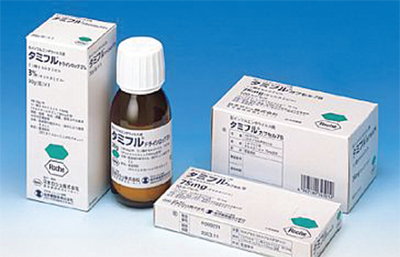NEW DELHI (TIP): An Indian researcher is part of a team led by a renowned Japanese scientist that has developed a new way of making the only known drug used for treating bird and swine flu. Presently, the drug oseltamivir, known by its brand name Tamiflu, is made solely by the Swiss pharma giant Roche through a costly and secretive process. Kaliyamoorthy Alagiri, the son of a farmer in Nagapattinam district of Tamil Nadu, joined Masakatsu Shibasaki, a renowned organic chemist at the Institute of Microbial Chemistry, Tokyo, last year as a post-doctoral researcher.
The discovery of the new synthesis for tamiflu would shake up the pharma world and end the Roche patent monopoly. In 2009, Roche reportedly earned nearly $2 billion from tamiflu global sales as governments stockpiled the drug to fight swine flu. Roche is currently making tamiflu by two methods.
One involves extraction from the fragrant spice star anise, grown primarily in China and the other is biofermentation. Professor Shibasaki’s team used an easily available natural substance called glutamic acid as the starting point and synthesized the flu-drug. “Our process involves simple synthetic methods with inexpensive chemicals and minimum number of costand time-consuming chromatographic purification,” Shibasaki said.
The real question now is whether the process discovered by Shibasaki and his colleagues can be upscaled and commercialized. Alagiri is confident that it can be. “There is high possibility for industrial scale production of tamiflu using our latest protocol starting from L-glutamic acid. We are now collaborating with a pharmaceutical company,” Alagiri told TOI from his village Karuvazhakkarai where he has come to spend a few days with his parents. Alagiri elected to join the Shibasaki Lab because of the fame of the Japanese master. Professor Shibasaki has authored over 500 papers and several books and he is one of the leading chemists in the world, Alagiri said. “Working in Prof. Shibasaki’s lab is a great learning experience. He gives full freedom and encourages his students to give their inputs towards research,” he said.On his part, Professor Shibasaki is quietly appreciative of Alagiri. “Alagiri was one of the top candidates and I offered him a postdoctoral position supported by my research grant,” he said. There have been many attempts to synthesise tamiflu earlier including one by E.J.Corey, the Nobel winning Harvard chemist, and one by Shibasaki himself.
Although laboratory level success has been achieved, upscaling to production levels has been difficult. The recent outbreak of a new H7N9 bird flu virus in China has again revived interest in drugs to deal with these mutating viruses.
A Roche spokesperson claimed the new strain is sensitive to tamiflu “according to preliminary reviews”. Scientists around the world are racing to decipher the mutated H7N9 virus that has caused over 20 deaths in China. So, Roche’s assertion is still wishful thinking. Meanwhile, Alagiri wants to move on to “Europe or US” for more research, and then come back to India to work for a “premier research institute”.
